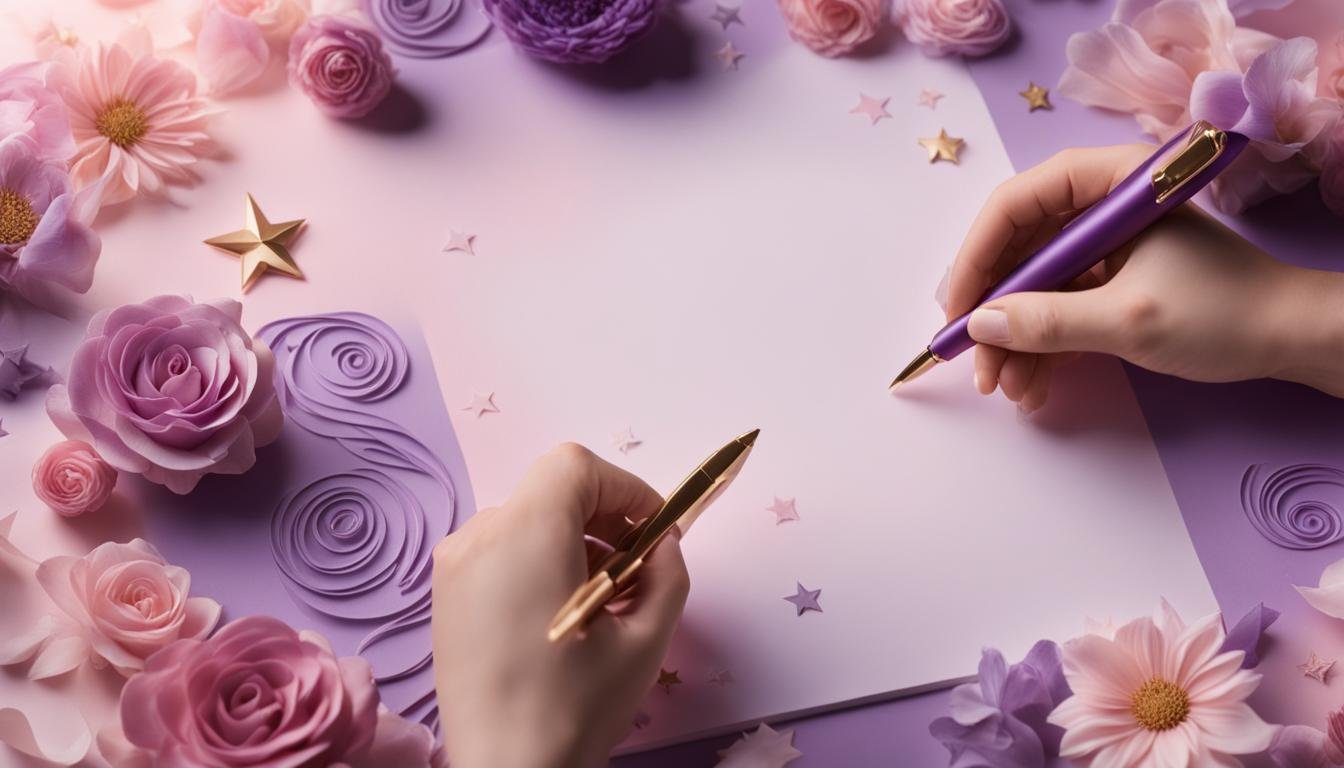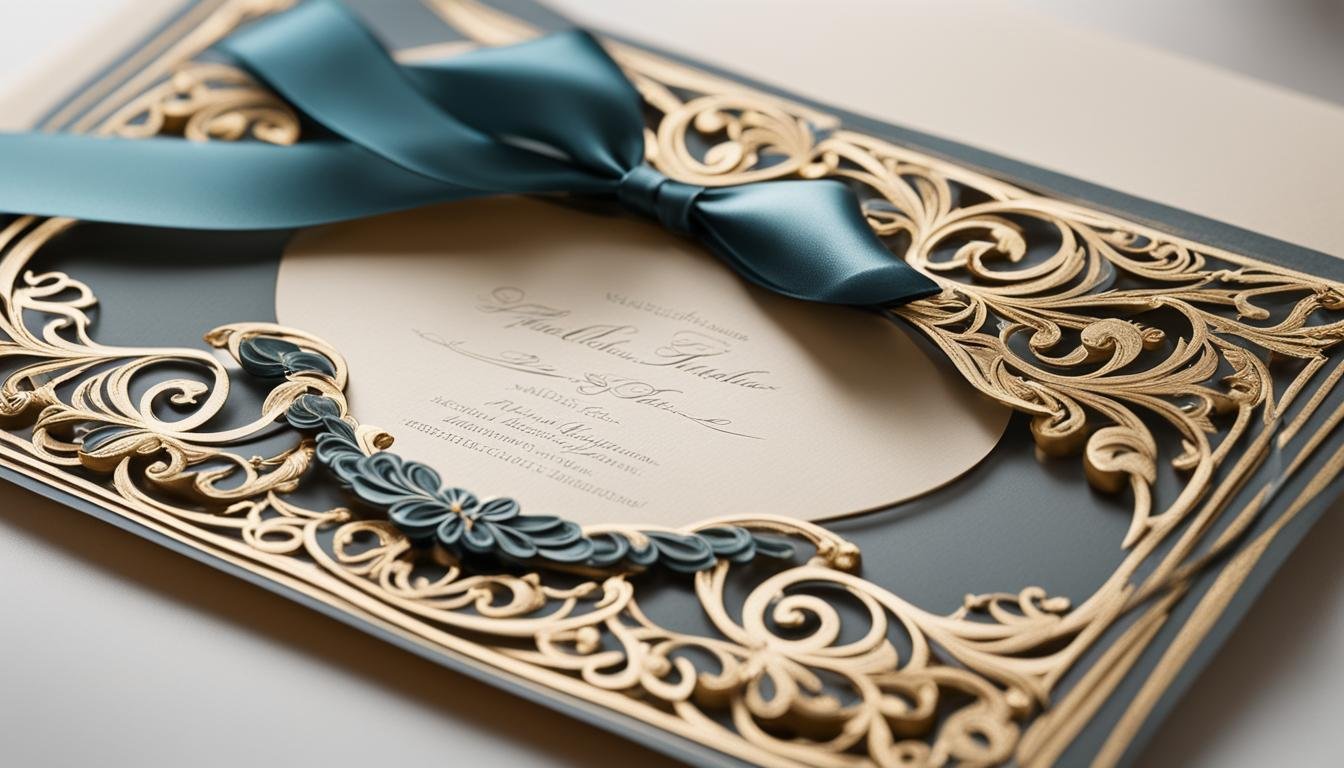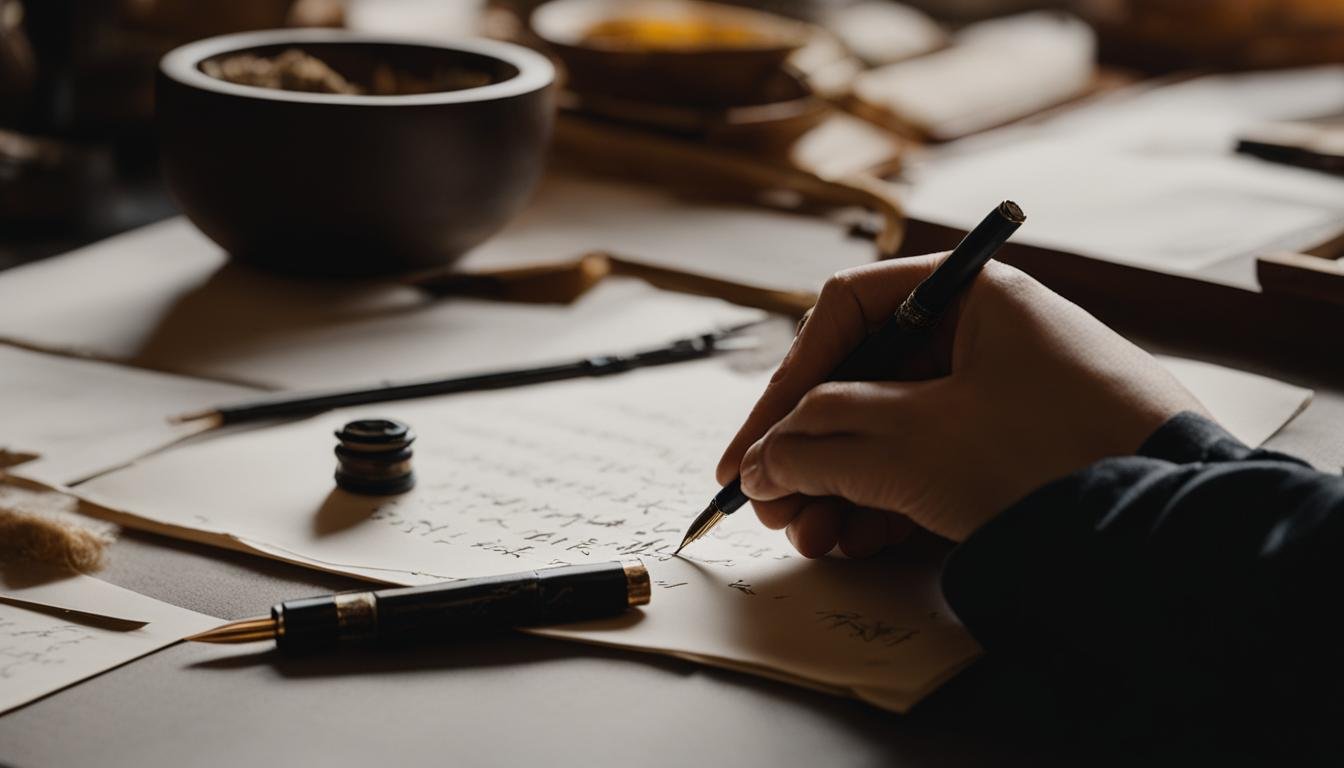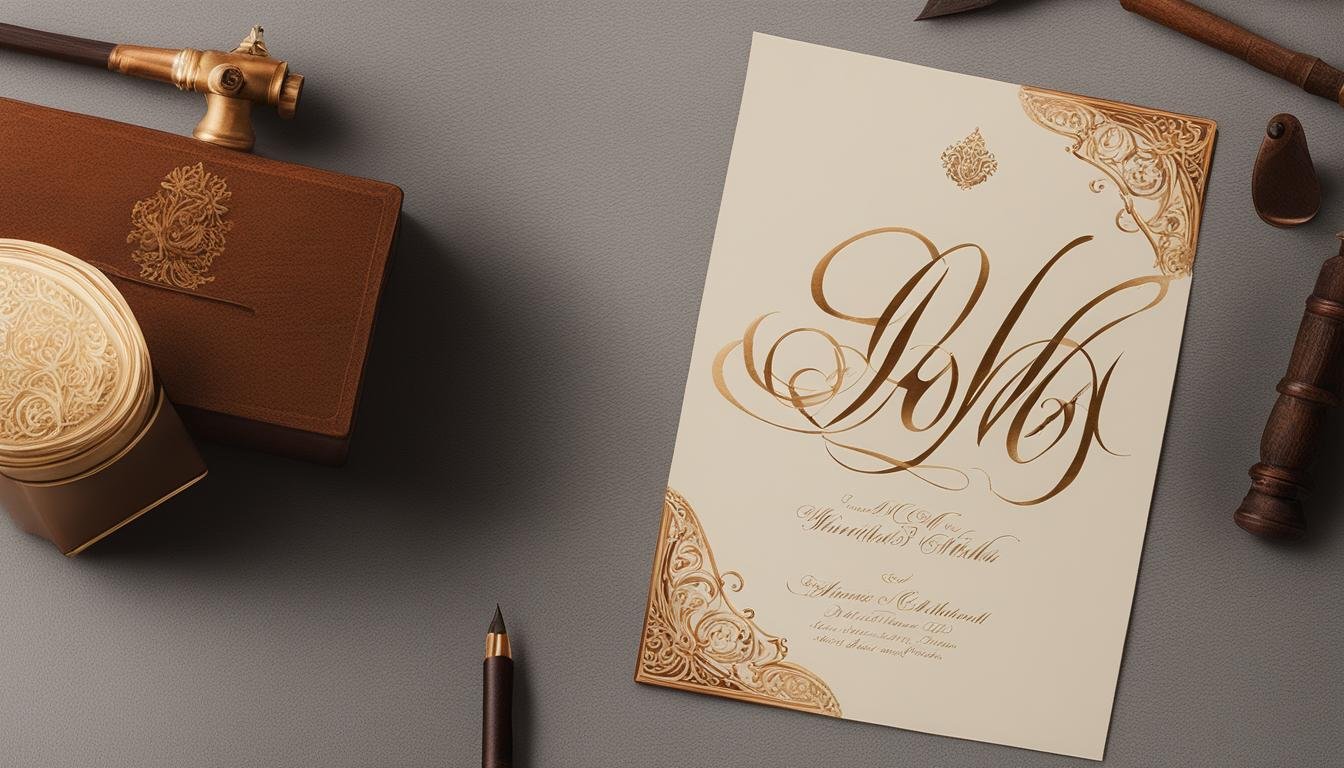Calligraphy Layout Tips: Transform Your Designs Like a Pro Instantly
Welcome to our guide on calligraphy layout tips! Whether you’re a beginner or a seasoned calligraphy enthusiast, mastering the art of creating visually stunning compositions is essential. In this section, we’ll explore various techniques, ideas, and design principles that will help you elevate your calligraphy skills to the next level and design like a pro.
Key Takeaways:
- Understand the importance of composition for creating visually appealing calligraphy layouts.
- Experiment with different techniques such as spacing, typography, alignment to achieve a balanced composition.
- Explore various calligraphy layout styles like “Go with the Flow” layouts and Rough Sketch layouts for spontaneous and personalized compositions.
- Learn how to create full-on planned layouts using software like Photoshop and a lightbox for intricate and detailed compositions.
- Discover the elements of design in calligraphy, including line, shape, space, color, lettering style, and proportion.
Now that you have a glimpse into what this section has to offer, let’s dive into the wonderful world of calligraphy layouts and unlock your creativity!
Go with the Flow Layouts
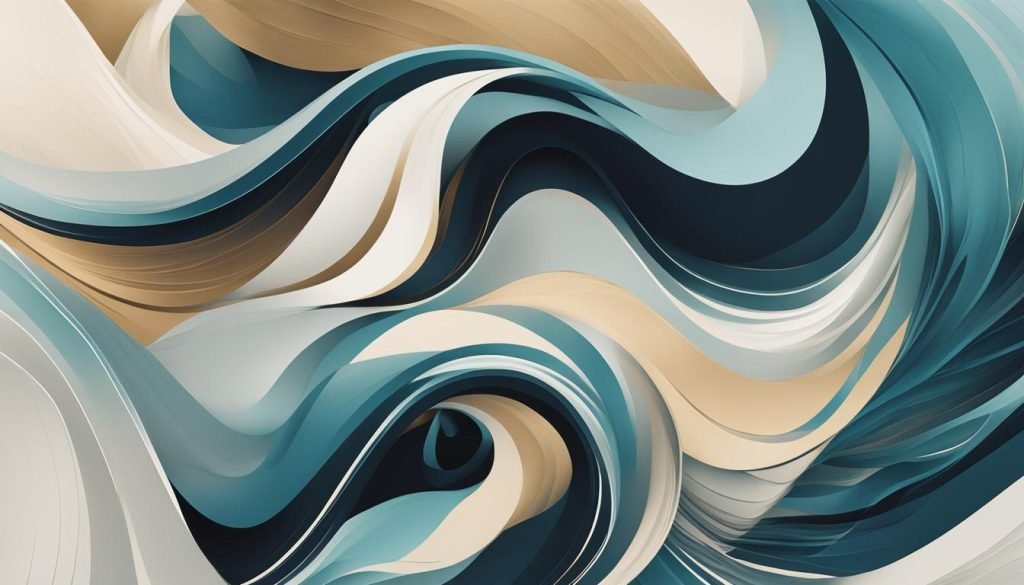
When it comes to calligraphy layouts, sometimes it’s best to let your creativity guide you and go with the flow. Spontaneous calligraphy layouts can bring a sense of authenticity and liveliness to your compositions. By balancing design elements in calligraphy, you can create visually appealing and harmonious pieces that truly capture the essence of your artistic expression.
One technique to consider is centering calligraphy on envelopes. This not only adds a touch of elegance but also creates a focal point that draws attention to your beautifully crafted words. Additionally, adding design elements such as floral illustrations or decorative borders can enhance the overall aesthetic of your calligraphy compositions.
To maintain consistency and precision in your layouts, using rulers for calligraphy guidelines is highly recommended. They can help you achieve even spacing between letters and words, ensuring a polished and professional look. Writing addresses in calligraphy is another way to personalize your designs, giving them a unique and sophisticated touch.
Remember, in “Go with the Flow” layouts, there are no strict rules to follow. Let your creativity take the lead and embrace the freedom of creating casual art and calligraphy pieces that truly reflect your artistic vision.
Table: Techniques for “Go with the Flow” Calligraphy Layouts
| Technique | Description |
|---|---|
| Centering calligraphy on envelopes | Create a focal point and add elegance to your compositions. |
| Adding design elements | Enhance the overall aesthetic by incorporating floral illustrations or decorative borders. |
| Using rulers for calligraphy guidelines | Maintain consistency and precision in your layouts by achieving even spacing between letters and words. |
| Writing addresses in calligraphy | Personalize your designs and add a sophisticated touch to your calligraphy compositions. |
| Repeating design elements | Establish a cohesive theme by incorporating recurring design elements throughout your composition. |
Rough Sketch Layouts
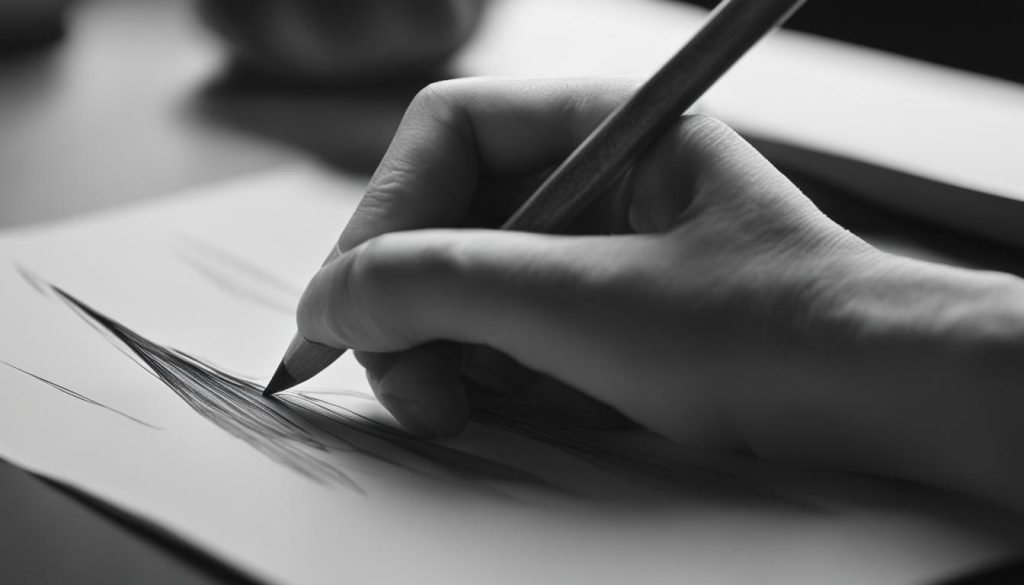
When it comes to planning calligraphy compositions, rough sketches can be an invaluable tool. By creating rough sketches, you can experiment with different layout ideas and select the best design elements for your personalized art pieces. Whether you’re designing a birthday card or exploring new layouts, rough sketches allow you to visualize and refine your calligraphy compositions.
One of the benefits of rough sketches is the creative freedom they offer. You can let your ideas flow onto the paper without the pressure of perfection. This allows you to explore different arrangements, play with lettering styles, and experiment with various spacing techniques. By embracing the roughness of the sketches, you can discover unique and captivating calligraphy layouts that truly express your creativity.
When creating rough sketches, consider the occasion or purpose of your composition. For example, if you’re designing a birthday card, think about incorporating elements like balloons or confetti into your layout. Experiment with different placement options and choose design elements that enhance the overall theme and message of your calligraphy piece.
Table: Choosing the Best Design Elements
| Design Element | Description |
|---|---|
| Flourishes | Ornamental strokes added to letters or words for decorative purposes. |
| Icons | Small graphical symbols representing ideas, objects, or concepts. |
| Frames | Borders or outlines that enclose the calligraphy, providing structure and emphasis. |
| Embellishments | Decorative elements such as swirls, dots, or stars that enhance the visual appeal of the composition. |
| Color | The use of different hues to add vibrancy and depth to the calligraphy layout. |
By experimenting with different design elements and incorporating them into your rough sketches, you can elevate your calligraphy compositions and create personalized art pieces that truly stand out. Remember, rough sketches are meant to be a creative playground where you can explore, refine, and bring your calligraphy visions to life.
Full-On Planned Layouts
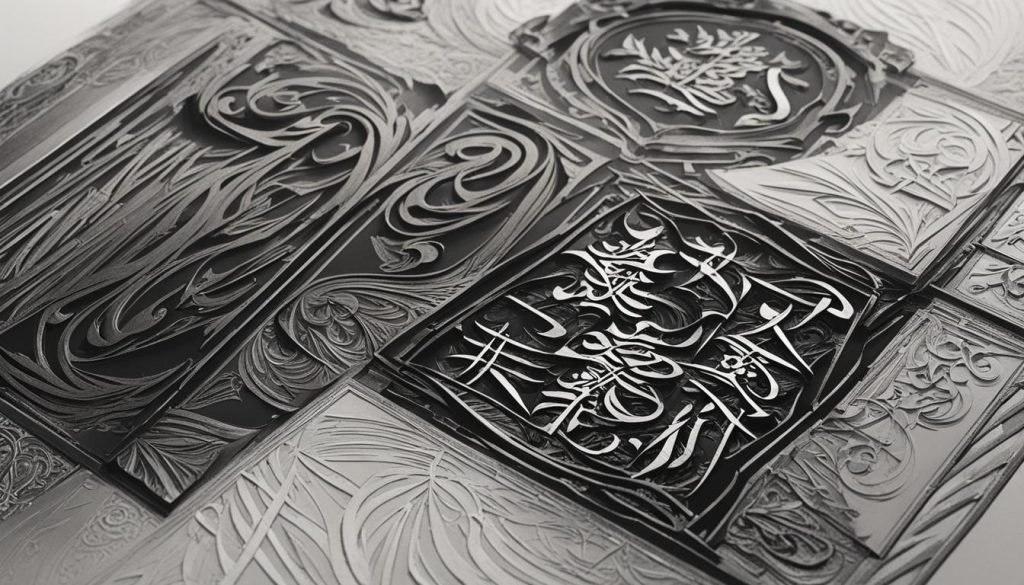
In the world of calligraphy, creating full-on planned layouts is an essential technique for achieving precise and visually stunning compositions. These layouts involve meticulous planning, the use of software like Photoshop for design, and the careful consideration of various elements. Let’s explore how you can create to-scale calligraphy layouts, utilize Photoshop for layout planning, work with a light box for calligraphy, incorporate calligraphy into menu design, and finalize your calligraphy layouts with finesse.
When creating full-on planned layouts, one important aspect is designing to-scale calligraphy compositions. This ensures that your layout will be accurately proportioned and visually appealing. Consider using rulers or gridlines in Photoshop to establish the precise measurements and dimensions for your calligraphy elements. Remember to pay attention to spacing, alignment, and overall balance to create a harmonious design.
“Using Photoshop for layout planning allows you to experiment with different arrangements and sizes of calligraphy elements without committing to a final design,” says renowned calligraphy artist Jane Smith. “You can easily move and resize letters, play with different fonts, and explore various color combinations to find the perfect arrangement for your composition.”
Another valuable tool in the creation of full-on planned layouts is a light box. A light box allows you to trace and transfer your calligraphy onto different surfaces, such as menus or signage, with precision and accuracy. It provides a consistent and even backlight, making it easier to see your guidelines and create clean, professional-looking calligraphy.
Calligraphy can also be incorporated into menu design, adding an elegant touch to restaurant menus or event programs. Consider integrating your calligraphy compositions with photographs, illustrations, or decorative elements that complement the style and theme of the menu. This can enhance the visual appeal of the menu and create a cohesive and captivating design.
Table: Examples of Calligraphy in Menu Design
| Menu Item | Calligraphy Style | Decorative Elements |
|---|---|---|
| Appetizers | Elegant script | Floral illustrations |
| Main Courses | Modern calligraphy | Geometric patterns |
| Desserts | Vintage-inspired lettering | Gold foil accents |
To finalize your calligraphy layouts, take the time to review your composition from different angles and perspectives. Ensure that everything is aligned correctly, the spacing between elements is consistent, and there are no smudges or imperfections. If needed, make any necessary adjustments or refinements to achieve a polished and professional look.
With the knowledge and techniques for creating full-on planned layouts, you can elevate your calligraphy compositions to new heights. Remember to plan your layouts to scale, utilize software like Photoshop for experimentation, work with a light box for precision, explore calligraphy in menu design, and review and finalize your compositions with meticulous attention to detail. By mastering these techniques, you’ll be able to design captivating and visually stunning calligraphy layouts.
The Importance of Composition in Calligraphy
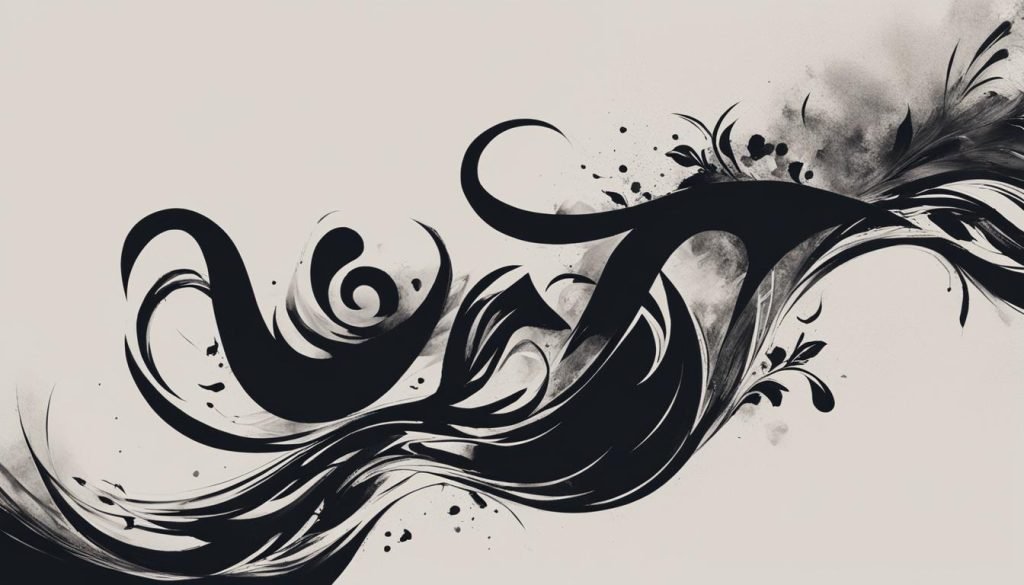
When it comes to calligraphy, composition plays a vital role in creating visually appealing and aesthetically pleasing artwork. The way you arrange words and design elements can greatly impact the overall impact and effectiveness of your calligraphy compositions. By understanding the importance of composition in calligraphy, you can improve your skills in arranging words, generating new layout ideas, and enhancing the overall quality of your calligraphy compositions.
Arranging words in calligraphy requires careful thought and consideration. You must determine the hierarchy of the words, ensuring that important words or phrases stand out and receive the attention they deserve. One effective technique is to use larger lettering or special treatments, such as embossing or gold leaf, to emphasize key words or focal points in the composition. By arranging words strategically, you can create a visual flow that guides the viewer’s eye and enhances the overall impact of your calligraphy.
Generating new layout ideas is essential for expanding your creative repertoire in calligraphy. By experimenting with different arrangements, spacing techniques, and design elements, you can discover unique and visually captivating layouts. Consider exploring different lettering styles, incorporating decorative flourishes, or using unconventional alignments to create compositions that stand out. Embrace your creativity and let your imagination guide you as you explore new layout ideas in calligraphy.
Elements of Design in Calligraphy
Understanding the elements of design is crucial for creating effective calligraphy compositions. By incorporating elements such as line, shape, space, and color, you can add depth, visual interest, and harmony to your calligraphy artwork. For example, utilizing varying line weights or incorporating different shapes into your compositions can create dynamic and visually engaging calligraphy pieces. Additionally, using negative space or incorporating colors can further enhance the overall impact of your calligraphy compositions.
| Element of Design | Description |
|---|---|
| Line | Utilizing different line weights and styles to create visual interest and guide the viewer’s eye. |
| Shape | Incorporating different shapes and forms into your compositions to add depth and visual appeal. |
| Space | Considering the use of negative space and overall composition to create balance and harmony in your calligraphy artwork. |
| Color | Exploring the use of color to add vibrancy and visual impact to your calligraphy compositions. |
| Lettering Style | Choosing the appropriate lettering style that complements the overall composition and theme of your calligraphy artwork. |
| Proportion | Understanding the relationship between different elements in your composition and ensuring they are balanced and visually appealing. |
By incorporating these elements of design into your calligraphy compositions, you can elevate the impact and visual appeal of your artwork. Experiment with different techniques, explore new ideas, and continue to improve your calligraphy compositions by paying attention to composition and design principles.
Elements of Design in Calligraphy
When it comes to creating visually captivating calligraphy compositions, understanding the elements of design is key. The elements of design in calligraphy include line, shape, space, color, lettering style, and proportion. By utilizing these elements effectively, you can enhance your calligraphy layouts and make them truly stand out.
Line: In calligraphy, the line refers to the strokes created by the pen or brush. Experimenting with different line weights and styles can add depth and visual interest to your compositions.
Shape: Shapes play an important role in calligraphy layouts. Whether it’s the shape of individual letters or the overall arrangement of words, incorporating various shapes can create a dynamic and visually pleasing composition.
Space: The use of space is crucial in calligraphy. Proper spacing between letters, words, and lines can greatly impact the legibility and overall aesthetic of your composition. Pay attention to both positive and negative space to achieve a balanced layout.
Color: While calligraphy is often associated with black ink, incorporating color can add a vibrant and playful element to your compositions. Experiment with different color palettes to enhance the mood and theme of your calligraphy.
Lettering Style: The style of your calligraphy letters can greatly influence the overall look and feel of your composition. Whether you choose a traditional, modern, or decorative style, be consistent in your lettering throughout the layout.
Proportion: Proportion refers to the size and scale of different elements within your calligraphy composition. Creating a harmonious balance between large and small elements can help guide the viewer’s eye and create visual interest.
By understanding and utilizing these elements of design in your calligraphy layouts, you can create visually stunning compositions that truly showcase your artistic talent and creativity.
| Element | Description |
|---|---|
| Line | Refers to the strokes created by the pen or brush |
| Shape | Includes both the shape of individual letters and the overall arrangement of words |
| Space | Refers to the spacing between letters, words, and lines in a composition |
| Color | Can add vibrancy and enhance the mood of a calligraphy composition |
| Lettering Style | Refers to the overall style and appearance of the calligraphy letters |
| Proportion | Relates to the size and scale of different elements within a calligraphy layout |
“`
Understanding and applying the elements of design in calligraphy will elevate your compositions to new heights. Experiment with line weights and styles, incorporate different shapes, pay attention to spacing and balance, explore the use of color, be consistent with your lettering style, and create proportionate layouts. By harnessing these design elements, you’ll create visually captivating calligraphy that leaves a lasting impression.
Styling Tips for Calligraphy
When it comes to calligraphy, styling is just as important as the composition itself. Proper styling can elevate your calligraphy and create a professional and visually captivating presentation. Whether you’re designing stationery, creating art pieces, or showcasing your calligraphy through photography, here are some tips to help you style your calligraphy like a pro.
Professional Stationery Styling
If you’re designing stationery with calligraphy, pay attention to the overall look and feel. Consider using high-quality paper and envelopes to create a luxurious and elegant impression. Choose neutral color palettes that complement your calligraphy and avoid distracting patterns. Additionally, don’t be afraid to incorporate other design elements such as illustrations, borders, or wax seals to enhance the overall aesthetic.
Natural Light in Calligraphy Photography
When it comes to capturing your calligraphy through photography, lighting is key. Natural light provides the best illumination for showcasing the details and intricacies of your work. Set up your photography area near a window or in a well-lit room. Avoid harsh shadows by diffusing the light with a sheer curtain or using a reflector to bounce light onto your calligraphy. Experiment with different angles and exposures to achieve the desired effect.
Neutral Backdrops and Props
Choosing the right backdrop is crucial for highlighting your calligraphy. Opt for neutral colors such as white, light gray, or pastel shades to create a clean and timeless look. Avoid busy backgrounds that can distract from your calligraphy. Additionally, consider using props such as flowers, vintage stamps, or wax seals to add depth and visual interest to your compositions. Just remember to keep the focus on your calligraphy.
Layouts and Arrangements
When styling your calligraphy, consider the layout and arrangement of your compositions. Experiment with different placement options, such as centered, off-center, or diagonally aligned. Play around with varying sizes, fonts, and lettering styles to create visual contrast and balance. Don’t be afraid to mix and match different calligraphy techniques to add depth and dimension to your work. Remember, the key is to create visually captivating layouts that enhance your calligraphy.
By following these styling tips, you can showcase your calligraphy like a professional. Whether you’re creating stationery, capturing your work through photography, or simply styling your compositions, attention to detail and careful consideration of elements such as lighting, backdrops, and layouts can make all the difference in presenting your calligraphy in the best possible way.
| Table: Styling Tips for Calligraphy |
|---|
| 1. Use high-quality paper and envelopes for a luxurious look. |
| 2. Choose neutral backdrops to keep the focus on your calligraphy. |
| 3. Incorporate props like flowers or wax seals for added visual interest. |
| 4. Experiment with different layouts and arrangements to create unique compositions. |
| 5. Utilize natural light for photography to showcase the details of your calligraphy. |
Photography Tips for Calligraphy Styling
Capturing high-quality photographs of your styled calligraphy compositions is essential for showcasing the intricate details and beauty of your work. To help you create professional-quality photographs, here are some valuable photography tips specifically tailored to calligraphy styling:
1. Use a DSLR Camera
To capture the fine details and nuances of calligraphy, a DSLR camera is highly recommended. DSLR cameras offer greater control over settings such as aperture, shutter speed, and ISO, allowing you to achieve crisp, high-resolution images. Invest in a quality DSLR camera to elevate the visual appeal of your calligraphy photography.
2. Proper Lighting is Key
Lighting plays a crucial role in photography, and calligraphy styling is no exception. Use natural light whenever possible, as it produces a soft, flattering glow that enhances the beauty of your compositions. Avoid harsh artificial lighting, as it can create unwanted shadows and distort colors. Experiment with different lighting setups to find the perfect balance for your calligraphy photography.
3. Create Professional-Quality Photographs
To ensure professional-quality photographs, pay attention to the composition and framing of your shots. Consider the rule of thirds and experiment with different angles and perspectives to create visually engaging images. Pay attention to the overall balance and harmony of the composition, highlighting the calligraphy while allowing the viewer to appreciate the surrounding elements.
With these photography tips, you can elevate your calligraphy styling and capture stunning images that showcase the beauty of your compositions.
| Photography Tips for Calligraphy Styling |
|---|
| Use a DSLR Camera |
| Proper Lighting is Key |
| Create Professional-Quality Photographs |
Conclusion
Now that you’ve learned various calligraphy layout tips, it’s time to put your newfound knowledge into practice and unleash your creativity in calligraphy. By incorporating the techniques and ideas discussed in this article, you can elevate your compositions and design like a pro.
To summarize, we explored different types of calligraphy layouts, including “Go with the Flow” layouts, rough sketch layouts, and full-on planned layouts. We discussed the importance of composition and the elements of design in calligraphy, highlighting how line, shape, space, color, lettering style, and proportion play essential roles in creating visually appealing compositions.
Additionally, we provided tips for styling calligraphy and capturing professional-quality photographs of your work. By paying attention to styling factors such as lighting, backdrops, and props, you can showcase your calligraphy in the best possible way.
Remember, calligraphy is an art form that allows for creative expression. So don’t be afraid to experiment, try new layouts, and develop your own unique style. With practice and perseverance, you’ll master the art of calligraphy and create stunning compositions that truly stand out.
FAQ
What techniques are covered in the Calligraphy Layout Tips section?
The Calligraphy Layout Tips section covers various techniques and ideas for creating balanced and visually appealing compositions, including spacing techniques, typography design, and alignment tips.
What will I learn about “Go with the Flow” layouts?
The “Go with the Flow” layouts section will guide you through the process of creating spontaneous and fun calligraphy compositions. It includes techniques for centering calligraphy on envelopes, adding design elements, using rulers for guidelines, and writing addresses. The importance of repeating design elements to establish a cohesive theme is also discussed.
How can rough sketch layouts help me plan my calligraphy compositions?
Rough sketch layouts allow you to plan and experiment with different calligraphy compositions. In this section, you will learn how to create rough sketches, choose the best design elements, and select layouts for specific occasions, such as birthday cards. The section also discusses how to personalize art pieces through layout experimentation.
What are full-on planned layouts?
Full-on planned layouts involve creating detailed, to-scale calligraphy compositions using software like Photoshop and a light box. This section explains the process of creating full-on planned layouts, including using Photoshop for layout planning, working with a light box, and finalizing calligraphy compositions. Examples of calligraphy in menu design are also provided.
How does composition impact calligraphy?
Composition plays a crucial role in creating visually appealing calligraphy. In this section, you will learn about the importance of composition in calligraphy, including techniques for arranging words, generating new layout ideas, and improving calligraphy compositions. The section also explores the elements of design that are relevant to calligraphy.
What are the elements of design in calligraphy?
The elements of design in calligraphy include line, shape, space, color, lettering style, and proportion. In this section, you will explore how these elements can be used to enhance calligraphy compositions and create visually engaging layouts.
What are some styling tips for showcasing calligraphy?
Styling is an important aspect of showcasing calligraphy in a professional and visually appealing manner. In this section, you will find tips and tricks for styling calligraphy, including utilizing natural light for photography, choosing neutral backdrops, selecting props, and creating visually captivating layouts and arrangements.
What photography tips are specific to calligraphy styling?
Capturing high-quality photographs of styled calligraphy is crucial for showcasing the beauty and details of the compositions. This section offers photography tips specifically tailored to calligraphy styling, including using DSLR cameras, proper lighting techniques, creating professional-quality photographs, and applying composition principles to calligraphy photography.

